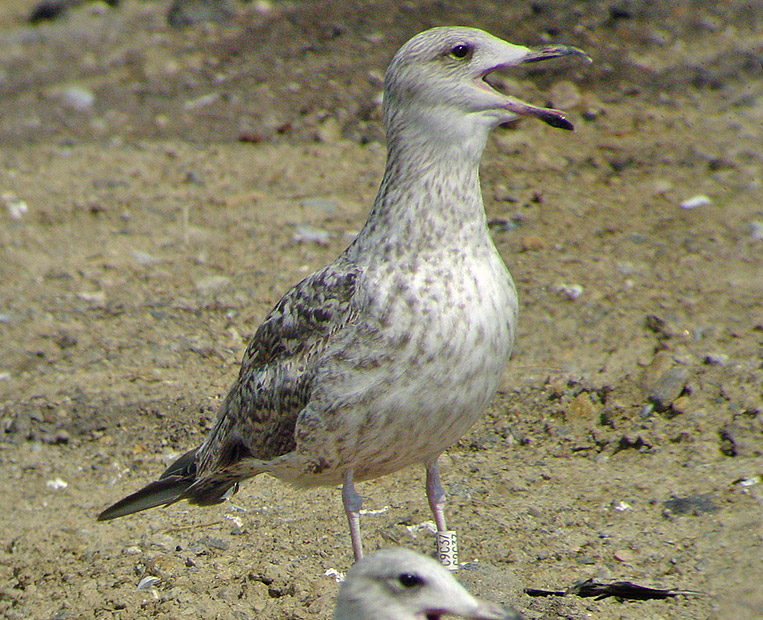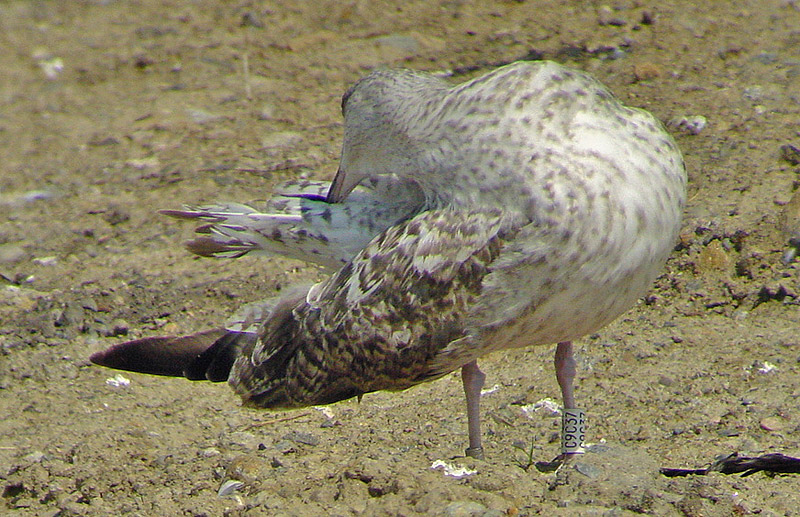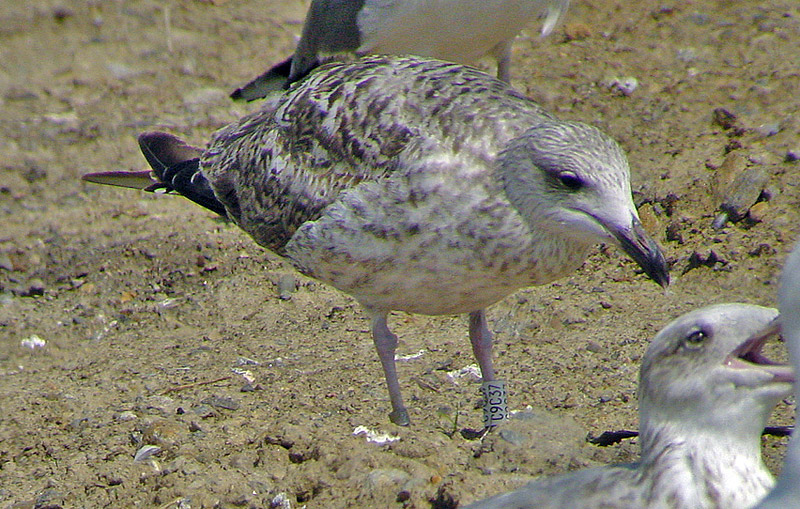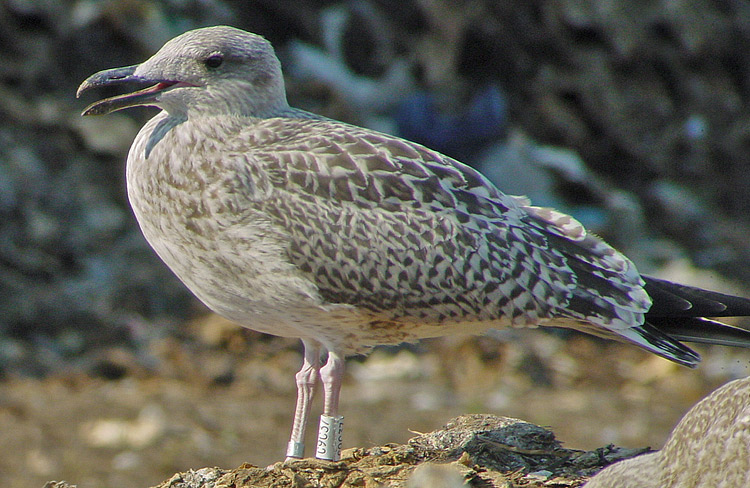 Herring Gull- Zilvermeeuw (argentatus & argenteus)
Herring Gull- Zilvermeeuw (argentatus & argenteus)
(last update:
Herring Gull plumages:
hg 1cy July
hg 1cy August
hg 1cy September
hg 1cy October
hg 1cy November
hg 1cy December
hg 2cy January
hg 2cy February
hg 2cy March
hg 2cy April
hg 2cy May
hg 2cy June
hg 2cy July
hg 2cy August
hg 2cy September
hg 2cy October
hg 2cy November
hg 2cy December
hg 3cy January
hg 3cy February
hg 3cy March
hg 3cy April
hg 3cy May
hg 3cy June
hg 3cy July
hg 3cy August
hg 3cy September
hg 3cy October
hg 3cy November
hg 3cy December
hg sub-ad January
hg sub-ad February
hg sub-ad March
hg sub-ad April
hg sub-ad May
hg sub-ad June
hg sub-ad July
hg sub-ad August
hg sub-ad September
hg sub-ad October
hg sub-ad November
hg sub-ad December
hg ad January
hg ad February
hg ad March
hg ad April
hg ad May
hg ad June
hg ad July
hg ad August
hg ad September
hg ad October
hg ad November
hg ad December
|
Herring Gull C9C37 1-2cy (argentatus), August 2002 & July 2003, Tampere, Finland (61.31N,23.43E). below: C9C37 1cy (argentatus), August 08 2002, Tampere, Finland (61.31N,23.43E). A 1cy argentatus, ringed in Finland: white C9C37, seen on August 08 until August 11 2002. This individual is in complete juvenile plumage and shows hardly any wear on the upper-parts. Argentatus in juvenile plumage has the head and under-parts streaked grey-brown, rather pale on forehead and throat and with dark ear-coverts. The mantle and scapulars are brown based with buffish-yellowish fringes when the feathers are fresh, with shiny white fringes when the feathers are older. The notched pattern is repeated on the lesser, lower lesser and median coverts, although the medians have paler centres. The greater coverts show a 'piano-key' pattern; also on the outer greater coverts in argenteus, but sometimes these outer greater coverts have extensive dark centres and a thin fringe in argentatus.
The partial autumn moult (moult into so-called "first winter" plumage) includes the body and head feathers. This moult may start as soon as the nest is abandoned. Due to the wide breeding range of argentatus in Scandinavia, from Denmark to the far north of Norway and Russia, much variation exists regarding the commencement of this partial moult. We did a small survey in Tampere, SW Finland in the second week of August. The results are presented in the table below. Over 50% of the 1cy argentatus started scapular moult and about 1/3 of the birds showed second generation scapulars. However, with severe winter conditions in northern Scandinavia, 2cy argentatus may turn up along the coast of the Netherlands, still in complete juvenile plumage by January. These birds are believed to origin from the far northern Scandinavian and Russian populations. In the table below, the scapular moult scores of 1cy August argentatus in Finland can be read:
|
||||||||||||||||
3 images below: C9C37 2cy (argentatus), July 15 2003, Tampere, Finland (61.31N, 23.43E).

A 2cy argentatus, ringed white
C9C37 as pullus
on June 24 2002 in Vkoski, Finland (61.17N 24.09E). The complete moult is well underway with
most wing-coverts and the inner primaries moulted to second generation.
Primary P8 has been dropped and P9-P10 still juvenile. P1-P6 are fully
grown second generation flight-feathers. All tail-feathers, except one (R5
or R6) are dropped and growing second generation.
Most tertials and the wing-coverts are replaced for second
generation feathers. The central greater coverts are still growing: the
gap in the greater covert row is almost closed. Last juvenile wing-coverts
can be found in the lesser coverts.
By July, the warm brown tones of the first moulted
second generation feathers
(inner greater coverts and inner median coverts) are faded to
plain white, leaving a contrasting barred pattern on the wing-coverts. On
average, 2cy argentatus is more contrastingly patterned than same
aged 2cy argenteus, especially regarding the pattern on the central
greater coverts. However, some argentatus are distinct "washed
out" brown, showing the common vermiculated pattern of 2cy argenteus.
The
last moulted coverts are the central greater coverts and outer lesser coverts, replaced by
mid-August. From mid-August onwards, 2cy argentatus start the partial autumn
moult, starting again to drop the upper tertial and inner greater and
median coverts.
In the tables below, the primary moult scores of 2cy July argentatus in Finland can be read:
| Primary moult score of 2cy argentatus Herring Gull, at Tampere landfill, Finland (61.33N, 23.59E) on July 10 2003. | ||||||
| . | P4 fg | P5 fg | P6 fg | P7 fg | ? fg | n: |
| P6-P10 | - | - | - | - | - | - |
| P7-P10 | 5 | 4 | - | - | 6 | 15 |
| P8-P10 | 1 | 54 | 6 | - | 13 | 74 |
| P9-P10 | - | 11 | 34 | - | 2 | 47 |
| P10 old | - | - | 1 | 1 | - | 2 |
| n: | 6 | 69 | 41 | 1 | 21 | 138 |
| n
= 138; m old P = 2.7; SD old P = 0.67. Survey at Tampere, landfill, in resting group at 'the saddle', about 200 2cy Herring Gulls, probably 100% argentatus. P6-P10 = P6-P10 are still old and present. ? fg = fully grown not known. Fully grown primary score most probably P6 or less. fg = fully grown. In our field surveys, a primary is 'fully grown' when it exceeds the previous feather in the folded wing. Actually, such 'fully grown' feathers may have to grow a little, but under field circumstances, it's very difficult to find out if the waxy sheath, which is the standard measurement for fully grown primaries, is still present. |
||||||
| Primary moult score of 2cy argentatus Herring Gull, at Tampere landfill, Finland (61.33N, 23.59E) on July 13 2003, 15:00 h. | ||||||
| . | P4 fg | P5 fg | P6 fg | P7 fg | ? fg | n: |
| P6-P10 | - | - | - | - | 1 | 1 |
| P7-P10 | 2 | - | - | - | 4 | 6 |
| P8-P10 | - | 26 | 6 | - | 18 | 50 |
| P9-P10 | - | 20 | 52 | 1 | 5 | 78 |
| P10 old | - | - | 5 | 3 | - | 8 |
| n: | 2 | 46 | 63 | 4 | 28 | 143 |
| n
= 143; m old P = 2.4; SD old P = 0.69. Survey at Tampere, landfill, in resting group at 'Bio I'. |
||||||


